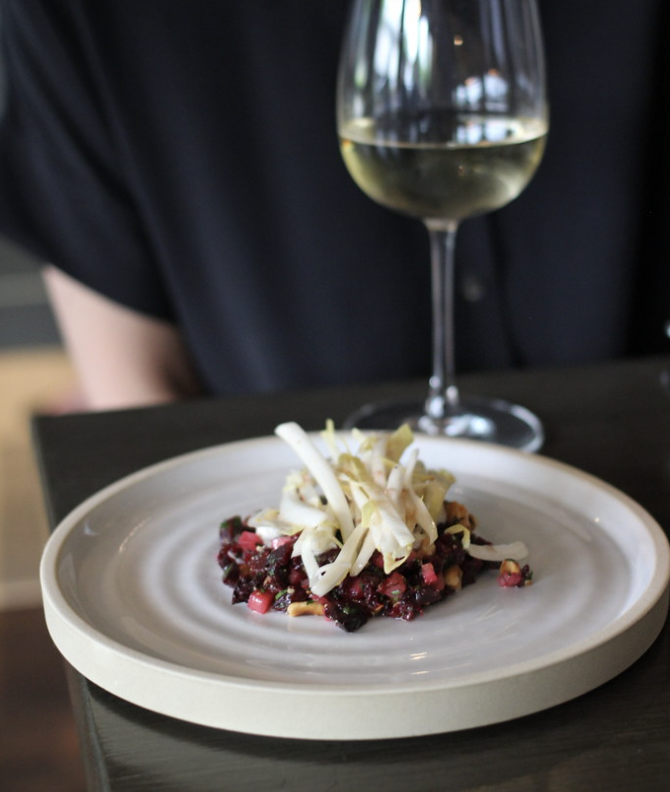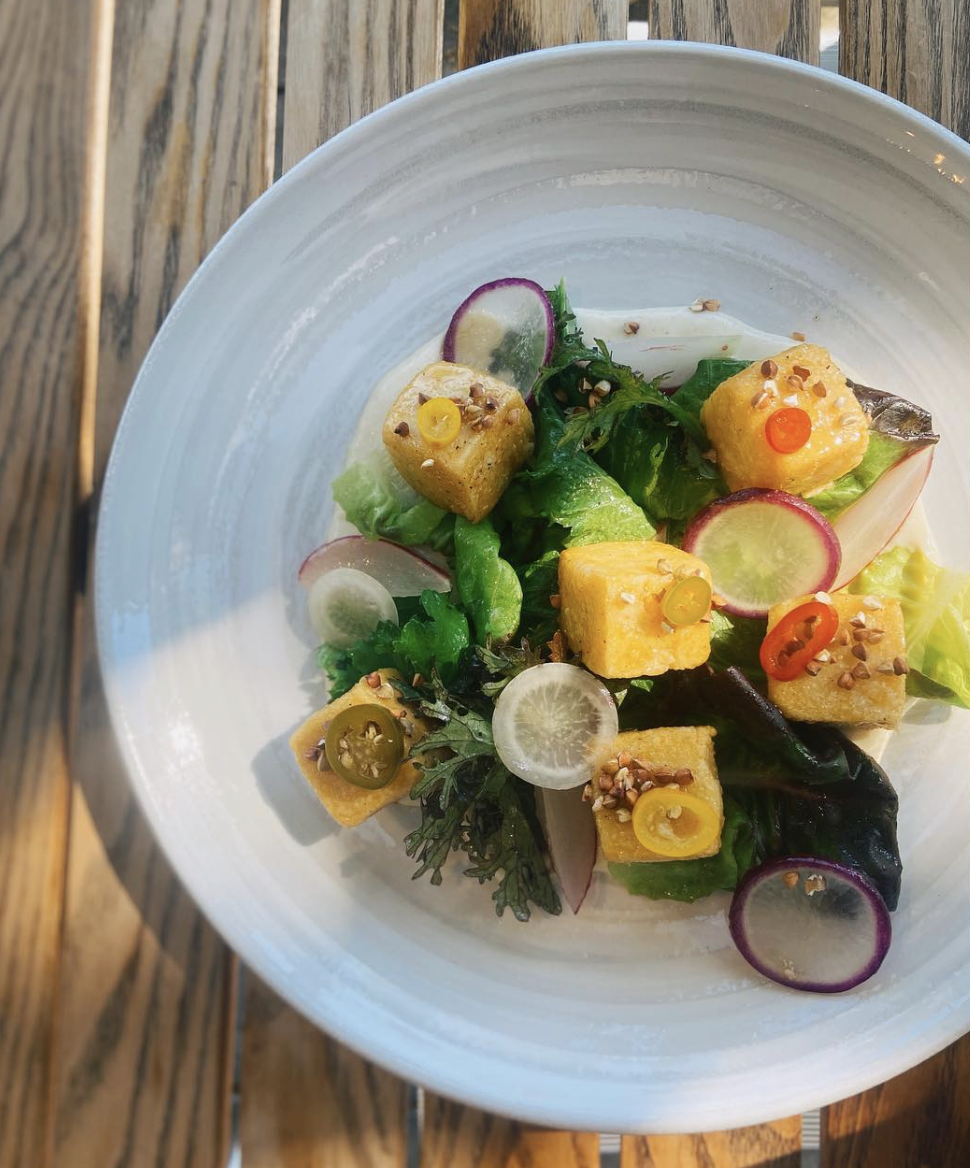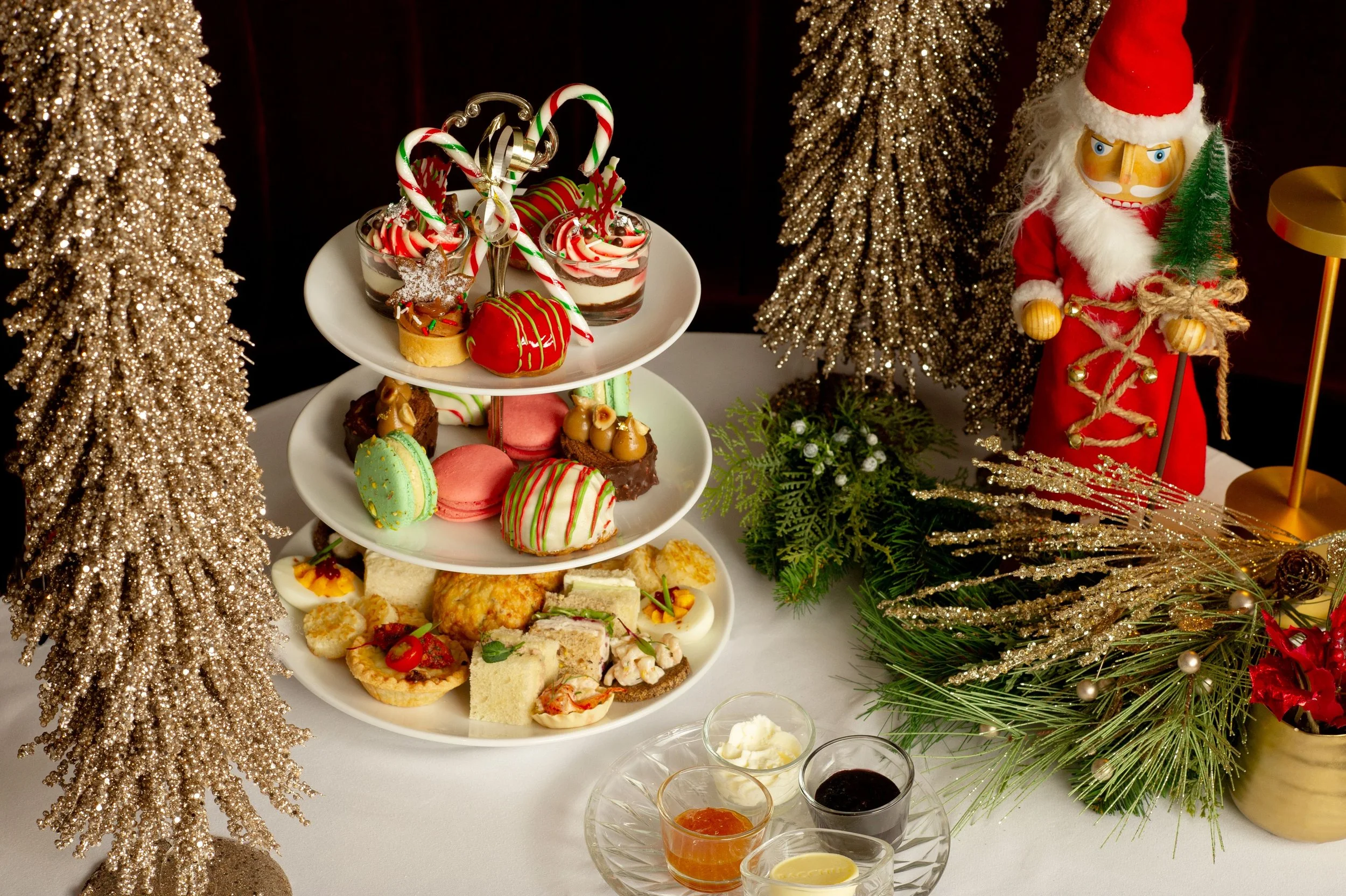Vancouver's Folke Restaurant goes all-in on progressive plant-based cuisine
Hospitality is included in the prices at this Kitsilano dining destination that celebrates all things vegan
Folke Restaurant.
THE CUBES OF chickpea tofu at Folke Restaurant are as big and fluffy as the marshmallows from Butter Baked Goods—and they may well be the best vegan dish in Vancouver right now. Made with chickpea flour, they’re deep-fried and seasoned with za’atar, served with turnip, and spruced up with zhoug, a cilantro-based hot sauce, everything loaded with character and colour.
Folke features a fully plant-based menu with plates meant for sharing and a drinks list made up of exclusively local (B.C.) wines, spirits, beer, and cider. That in itself isn’t unique in Vancouver. But there’s more to this place than delicious, thoughtful dishes made with goods from local farmers and producers, and it has a feel all its own beyond the warmth of its simple décor (blue-grey walls; vases and hangings of dried wheat and grasses). There’s a collective good vibe, from the different chefs who run and describe food to guests to the servers to the hands-on co-owners: executive chef Colin Uyeda and pastry chef/ host Pricilla Deo. Folke is doing dining in Vancouver differently—and it’s working beautifully.
With tipping (or “tip-flation”) becoming an increasingly hot topic everywhere from morning radio shows to consumer polls, Folke is bucking the entrenched practice. Situated in Kits at 2585 West Broadway, it has a “hospitality included style of service”, meaning that tipping is part of the pricing, the goal being a sustainable model of work and pay for everyone the team.
The approach, and Folke itself, came about after years of experience in the restaurant sector for both Uyeda and Deo. During the pandemic, they found themselves falling out of love with the industry. They wanted an environment that they and everyone around them enjoyed being in, where people could grow and feel supported, where “front of house” (staffers on the floor, interacting with guests) and “back of house” (folks in the kitchen) could work cohesively together. And they wanted to ensure that everyone would be compensated fairly for the work they do.
“It was really about having our own voice in the industry and being able to create the collaborative environment that we wanted,” Deo tells Stir. “We both really enjoy cooking and love food and just wanted to be able to do it in a way that felt good to us, it was really about creating a place where we also wanted to work every single day.”
Since chefs work longer days than those in other positions, those at Folke get a four-day work week. Everyone is paid a salary that is comparable to a starting wage in the tech industry and also receives full benefits and a lifestyle spending account that can be put toward hobbies or other health expenses.
“We understand that this model doesn't work for everyone but it works really well for our team and they love it,” Deo says. “We didn't open Folke to try and change the industry or get other restaurants to follow suit. We opened Folke so we could create a really nice space for us and our team to thrive in.”
Pricilla Deo.
When people first hear about the all-in model, many assume that Folke’s prices are higher than other places as a result. They’re not. The menu is constantly changing, depending on what sustainable ingredients are in season; that chickpea tofu has ever-evolving accompaniments too. Some examples of dishes include kohlrabi with seaweed ginger dashi; sunflower risotto with pea shoots; ramen with brassica, amazake, and burnt onion; lentil Bolognese with brassicas and sourdough. Folke makes its own red-fife bread. Prices range from $10 for pickles to $30 for pizzocherri with potato, cabbage, and shio koji. Staff members suggest five to six items for two people. Its chef’s tasting menu –“Don't give a folke? lettuce cook for you”—is $85 per person, $135 with wine pairings.
Coming up next is Folke’s fifth menu takeover of the year. It’s Japanese Izakya night on April 3 from 5 to 9 pm, with dishes like daikon mochi, yakisoba (king oyster mushroom, charred onion, and Napa cabbage), carrot sunomono (yuzu, sesame, and cayenne), and more; prices range from $8 to $25.
“Our prices aren’t higher because we add on an additional gratuity or anything,” Deo says. “We ensure that our pricing covers all aspects of running a business such as overhead costs, wages, and rising food prices. It has been very well-received so far. Those who dine with us love that our staff is well taken care of. They also like that the price they see is what they are paying. Some of the challenges we face is the uneducated guesses that people tend to make about our environment. They assume we pay a low hourly wage and not a full salary. It is silly though, because you don't question how much retail workers are paid, or mechanics, or your doctor but as soon as the ability to tip is no longer in control of the consumer anymore, they have a lot of opinions.
“We love what we're doing,” she adds. “We know that our dining model isn't for everyone but we wouldn't change it. Bringing people together is something we value.”
Colin Uyeda.
Making Folke more intriguing is that neither Deo nor Uyeda are vegans; they just love the abundance of outstanding vegetables and fruit that grow nearby, and they clearly have a command of how different flavours and textures go together. And because they work with small farms as opposed to giant suppliers, they often get hard-to-find products. Along the same lines, they like showcasing smaller, unique wineries that make excellent wines but don't have a large exposure. Think Sea Star, Tightrope, and Aasha Wines. (Other local beverages include Main Street Brewing, Wildeye beer and Brickers Cider).
Uyeda, whose CV includes roles at Vancouver’s Kissa, Tanto, Pilgrimme on Galiano Island, three-Michelin-starred RyuGin in Tokyo, and the now-shuttered Relae in Copenhagen. He creates unique, layered dishes where every ingredient counts. There are no garnishes put on a plate strictly for the sake of making it look pretty for Instagram. Everything serves a purpose and is meant to be eaten and enjoyed. Deo puts a lot of care into creating elevated vegan desserts. “Most often, vegan desserts are limited to fresh fruit, sorbet, or raw cheesecakes,” she says. “We like taking desserts that are traditionally not vegan and being able to recreate them. We always try to use a seasonal fruit or vegetable in them to be able to still be vegetable-focused.”
Folke Restaurant.
Here's a glimpse into the creative process behind three Folke dishes, as related by Deo:
The beets: “Our beets are roasted, dehydrated, and smoked to enhance their flavour and texture. It was something that Colin first learned while working at Ralae and then adapted into a variation of a beet steak. With the beets that we have on our menu, it is his take on a beet tartare. It's one of those dishes that is seen often on vegan and vegetarian menus but done in a different execution. He is able to really elevate the dish with the process of how he cooks the beets and the additional flavours that he pairs with the beets. It is nice that the beet dish does change seasonally too.”
Folke Restaurant.
The dumplings: “We make a traditional Vietnamese-style dumpling as opposed to a wheat based dumpling. Dumplings are something that most people are familiar with, but we wanted to take a different approach to them and offer something a little more unique. Our mushroom XO filling is a take on a traditional Asian XO sauce that allows for a rich filling. Vietnamese dumplings are traditionally served with a fish sauce, but, being vegan, we chose to pair ours with a yuzu ponzu sauce to add in some acidity.”
Folke Restaurant.
Chickpea Tofu: “We make our chickpea tofu in house and it has this beautiful, soft, pillowy texture. We chose to not have traditional soy tofu because it is something that is readily available. It is also more sustainable to have chickpea tofu as we are able to get locally grown chickpeas. The inspiration behind this dish changes a lot just based on the season. During the fall and winter, we like adding heavier sauces and root vegetables to the dish which make it a bit more hearty. During spring and summer, we tend to do a lighter variation the dish and utilize more fresh vegetables.”


















